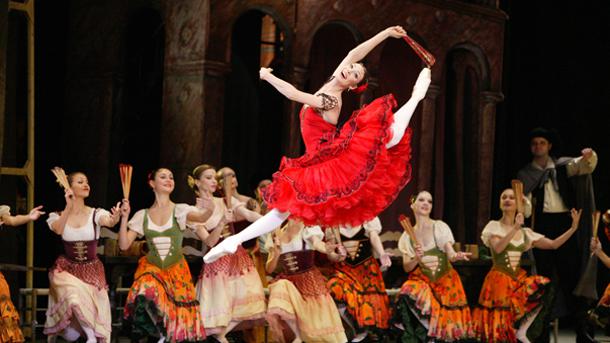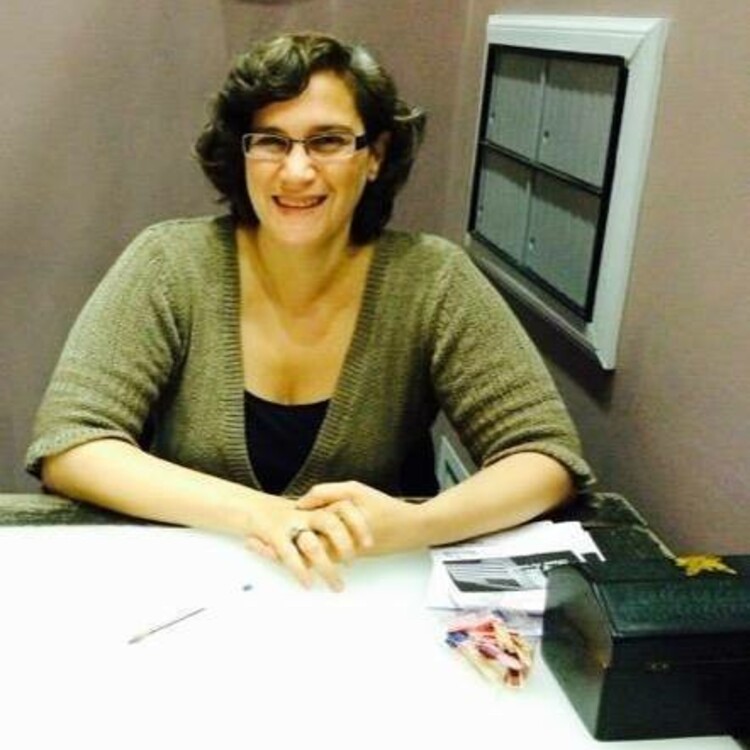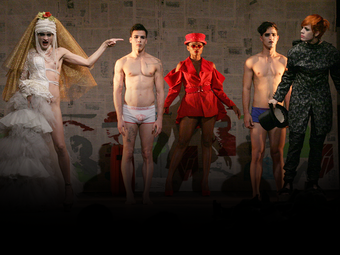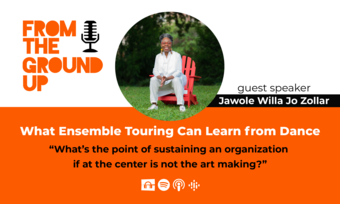The Bolshoi Ballet at The Lincoln Center Festival
The Lincoln Center Festival is a breathtaking annual event which ran this year from July 7-August 16. From extraordinary Kabuki Theater to Russian ballet, the festival features visionary dance, theater, music, and opera performances.

website.
The Bolshoi Theatre, based in Moscow, brought three full-evening ballets and an opera concert to New York City this year. According to Nigel Redden, the Director of The Lincoln Center Festival, the Bolshoi Theatre “stands for music and dance charged with drama and emotion presented with an unmistakably Russian flair.” The prestigious company performed Don Quixote, based on the story by Miguel de Cervantes. This two hour and fifty-five minute ballet, was, for me, particularly welcome.
There is something unmistakable about the Bolshoi. In red capes, the dancers brought their characters to life. The dancers were loyal to the story of Don Quixote, and performed their roles like actors. It never felt like museum theater or static art. Marius Petipa first brought the 1869 production of Don Quixote to Moscow. He wanted to create a ballet “in the Spanish manner.”
The Bolshoi’s Don Quixote has gone through many changes and has been performed more than 1,000 times in the past 145 years. The ballet cleverly takes the story from the Spanish Golden Age. With original choreography by Marius Petipa and Alexander Gorsky, the new version featured additional choreography by Alexei Fadeyechev. Alexei Loparevich played Don Quixote, a knight who dreams of a life without struggle. Alexander Petukhov played Sancho Panza, Don Quixote’s squire and loyal friend.
With sheer numbers and force, the ballet dancers left an impression, not of a worn out story, but one that was as inspired as it was emotional. Grand works are welcome at The Lincoln Center Festival, but the Bolshoi seemed bigger and bolder than most. The company blended ballet with elements of Commedia dell’Arte, creating an articulate and distinct performance.
The ballet was told in moments and images. At first, the number of dancers onstage seemed astonishingly large. On each side of the stage, groups of up to ten company members stood apart and commented on the lead dancers. These onlookers were continually engaged—one female performer oversaw the action from a stunning height on the right side of the stage.
It was easy to be awed while taking in the whole. The dancers wore bolero jackets and carried long, swashbuckling swords. With original costumes designed by Vasily Diyachkov in 1903, then revised by Tatiana Artamonova and Elena Merkurova, the Spanish flair was evident on stage. While true to the original design, the dancers didn’t read like museum relics, but rather as vital, strong performers. The strength of the female characters was inherent in throughout the piece—they commanded center stage with their grace and their technique. Kitri (alias Dulcinea), Juanita, and Piccilia in particular, were sensual and bold, and illuminated a time-honored yet contemporary interpretation of this classic piece.
The scenography was not so much dazzling as it was breathtaking. Dancers glided through the space, the scenery accenting their movement. The Bolshoi made a fine use of vertical levels, in a surprising moment, when dancers bounced high in the air on a trampoline.
The Bolshoi Ballet and Opera has lineage that dates back to 1776, making it one of the oldest companies in the world. Much has been written about the reconstruction of the building in Moscow. According to the official website, the theater building itself is one of Russia’s symbols—an emblem of Russian pride and honor, the theater represents the people and their heritage. Designed by Joseph Bove, it was originally founded by Prince Ptyotr Vasilyevich Urusov and Michael Maddox. The Bolshoi’s current home opened on the coronation day of Tsar Alexander II in 1856. Tchaikovsky’s ballet Swan Lake premiered there on March 4, 1877. Other staples of the Bolshoi include Tchaikovsky’s The Sleeping Beauty and The Nutcracker.
The physical plant has transformed with the times. In 1919, the house was renamed the State Academic Bolshoi Theatre. Shortly thereafter, there was an attempt to shut it down, but the theater re-opened in 1921. In 2009, Russian President Dmiti Medvedev created an “interdepartmental working group” to oversee the reconstruction. In October 2011, the Bolshoi again re-emerged after renovations costing over $688 million painstakingly completed by over 3,000 specialists working every day to refurbish the theater.
Sometimes, a building, as well as an aesthetic, defines a company. All Russian theaters used to be imperial property. The building is preserved as a “protected monument.”
The Bolshoi is Russia’s primary national theater. They work with a large orchestra helmed by Music Director Alexander Kopylov and Conductor Pavel Klinichev. At Lincoln Center, the orchestra was both forceful and sublime—featuring strings, cello, and trumpets—they contributed strength to a commanding performance.
Though ballet can suffer from too much perfection, the performance in New York saw no sign of that. The dancers were swift and charismatic. Rather than appearing stiff or stodgy, the Bolshoi were accessible, bringing levity and humor onstage. With dancers and clowns, the Bolshoi achieved both moments of pause and moments of kinetic energy. The stillness created toward the end of the ballet made for some of the most captivating international theater I have ever seen.
Sometimes, a building, as well as an aesthetic, defines a company. All Russian theaters used to be imperial property. The building is preserved as a “protected monument.
So few companies offer opera, ballet, chamber concerts, and theatrical storytelling. In this way, the Bolshoi is astonishingly at home. Far from Moscow as they were, the Bolshoi masterfully embraced their traditions at the David H. Koch Theater during The Lincoln Center Festival.
At the end of the performance, the lead dancers came out for a number of curtain calls. As the dancers took their final bow and the audiences trickled out, there was a collective sense that, perhaps next time, the Bolshoi will bring even more spectacle and fine craftsmanship, as only they know how.









Comments
The article is just the start of the conversation—we want to know what you think about this subject, too! HowlRound is a space for knowledge-sharing, and we welcome spirited, thoughtful, and on-topic dialogue. Find our full comments policy here